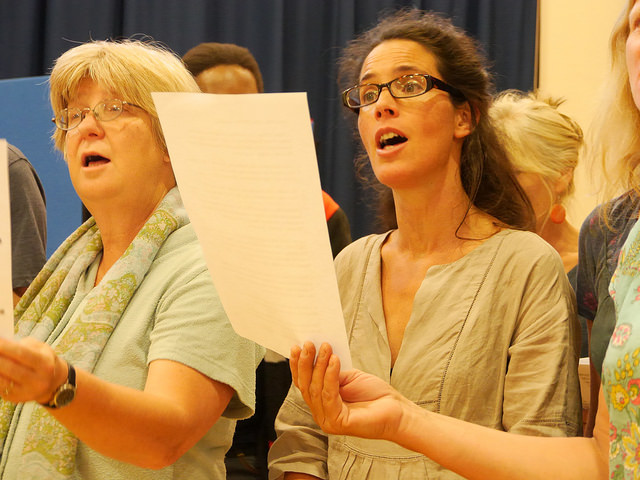
Our need for relationships and belonging plays an important role in mental health (Baumeister & Leary, 1995). Social relationships can create a buffer to distress (Cohen & Wills, 1985) and are considered one of the key ingredients in mental health recovery (Bird et al, 2014; Leamy et al, 2011). Recent evidence shows that social identification with groups is beneficial for well-being (Greenaway et al, 2015) and the more social groups we feel we belong to, the better our mood (Cruwys et al, 2014). Luckily, it is possible to improve social identification, and an improved sense of connection can generalise to individuals outside of the perceived in-group, resulting in a better clinical outcome (Haslam et al, 2016; Meuret et al, 2016).
In general, self-stigma in mental illness can have a negative effect on social relationships, as it is associated with higher levels of social anxiety (Gerlinger et al, 2013; Pyle et al, 2015; Vrbova et al, 2017) and loneliness, and can be a barrier to social activity (Stain et al, 2012).
This is a real shame, since besides improving well-being, feeling one belongs to a valued group helps to protect against self-stigma (Rüsch et al, 2009).
I wonder: is it the stigma that is influencing the social network, or is it actually the other way around? And has the importance of valued connections so far been underrated in research on stigma and mental health?
Besides the general positive psychological effects of collective gatherings (Páez et al, 2015), inter-group contact can reduce prejudice (Pettigrew & Tropp, 2006). Furthermore, shared activities can enhance the experience of being immersed and absorbed in these activities, resulting in improved personal well-being as well as an increase in social cohesion (Zumeta et al, 2016).

Has the importance of valued connections so far been underrated in research on stigma and mental health?
The qualitative study discussed in this blog (Shakespeare & Whieldon, 2017) is about the effect of participation in an inclusive singing group on mental health and well-being. By offering an opportunity to bring people from different mental health backgrounds in touch with each other, the us/them dichotomy can be challenged. Taking part in a singing group can have a powerful effect on mental health.
Leisure activities in general (Davies et al, 2016), music (Even, 2013) and the use of arts (Sapouna & Pamer, 2016) have been proven to be beneficial for well-being and mental health, and especially group singing (e.g. Clift et al, 2010; Clift & Morrison, 2011; De Souza Cateano et al, 2017; Sanal & Gorsev, 2014; Tavormina et al, 2014). Choir singing is even more effective than other hobbies like team sports (Stewart & Lonsdale, 2016), swimming (Valentine & Evans, 2001), or solo singing (Valentine & Evans, 2001; Stewart & Lonsdale, 2016).
Several theoretical rationales explain, when patched together, why group singing can be so beneficial. From a clinical psychology perspective, singing in a choir can be seen as a form of behavioural activation to improve low mood, exposure to reduce social anxiety, attentional bias modification to change patterns of rumination and worrying, cognitive training, and the mastery of new skills. The sense of concentration or absorption in an activity, called ‘flow’ (Csikszentmihályi, 1990), often occurs while singing, and is found to be related to social bonding (Keeler et al, 2015; Páez et al, 2015). A sense of flow goes together with improved well-being, heightened self-esteem (Robinson et al, 2012), higher levels of positive affect and lower levels of negative affect (Brom et al, 2014).
In general, emotions associated with music can be positive ones (Juslin & Laukka, 2004), and shared positive emotions have been found to improve the relationship with others (Taylor et al, 2017). Group singing has the added benefits of improving a sense of bonding (Chiu et al, 2016; Lamont et al, 2017; Parker, 2010; Stewart & Lonsdale, 2016) and these subjective changes are reflected by changes in oxytocin levels (Keeler et al., 2015; Schladt et al, 2017). Choir members socially identify with their group (Durrant, 2005). Moreover, choir participation increases the range of groups one feels one belongs to (so-called social identification) and this increase in social cohesion can even take place in larger choirs (Weinstein et al, 2015). All these ingredients make a singing group a great opportunity to improve well-being, mental health and social relationships.
So far, few studies have been done on the effect of singing together in people with different mental health backgrounds. The ones that did, found positive results in changing stigma and relationships, in group settings including Alzheimer’s patients and their families/carers and students (Beynon et al, 2016; Harris & Caporella, 2014) and in forensic psychiatric patients and community members (Mezey et al, 2015).

Group singing is fun, and good for our mental health.
Methods
Recruited from 4 ongoing inclusive singing groups open to mental health service users as well as members of the general public, 14 women and 6 men were interviewed, of which 17 had experience with treatment for mental health difficulties. Six people identified as carers, 5 of them reported mental health problems as a result of this role, while 2 people reported medical conditions. In addition, focus groups were held with key organisers of the choirs, as well as with two voice coaches. Additional information came from participant observation over a 6-month period of the 4 singing groups, that were weekly attended by about 120 singers, though the total number of members was higher.
An emphasis was placed on enjoyment and the singing groups or workshops were intentionally not described as a choir to their participants so as to minimise pressure on performance. Rehearsals took place on a weekly basis, with no requirements regarding attendance. The singing repertoire consisted of uplifting music and there was no need to sight-read. Participation was free and included a social aspect as people could mingle over the breaks at rehearsal.
Results
In line with the literature and expectations, participants reported sustained or improved well-being and mental health as a result of taking part in the singing workshops. Effects were described as improved positive effects on mood, social anxiety, and functioning, a greater sense of confidence and improvements in social skills, as well as physical benefits.
Their participation in the singing group provided group members with a sense of social engagement, belonging, safety and support. They felt they were able to have fun, express themselves and communicate in a safe environment, and claimed to benefit from the structure that attending the rehearsals gave them. They referred to the singing group as different from choirs or other group settings and especially valued the inclusive nature and accepting atmosphere, social equality, and absence of a formal therapy or need to speak about their condition. The authors included quotes from participants and organisers, which reflected a renewed sense of self-identity, an increased ‘togetherness’ as well as changes in social identification as a member of the singing group.
Support was offered on a formal and informal basis to those who needed it, but the responsibility of caring for group members was carried by the group as a whole. Friendships were formed between group members of different mental health backgrounds, and the group offered an opportunity to educate members without lived experience of mental illness about mental ill health, thus reducing stigma.
The ability for members to help out with the organisation of the rehearsals improved individual skills, group role-identity and a sense of self-efficacy and empowerment in some of the members but also had a positive effect on group cohesion. For some, improved social engagement transferred to situations outside of the choir.

Our sense of belonging is a key ingredient in our mental well-being.
Conclusions
Participation in a singing group led to improved mental health, well-being, and social relationships as well as positive changes in self- and social identity, increased empowerment and connectedness with others.
Strengths and limitations
The study discussed in this blog is a great example of a hobby with intentional benefits, the most obvious strengths being the effect of singing together and the set-up of inclusion and equality between group members from different mental health backgrounds.
The qualitative nature of the study ensured that themes that were important to the participants were brought to light, including detailed information from participants that couldn’t be captured by questionnaires.
Some limitations of the study are the self-selection of participants, and the ratio of participants with and without a history of service use. The missed opportunity to hear from individuals who did not volunteer for the interviews could mean that potential adverse effects may not have been captured.
In addition, as the aim was to evaluate this inclusive program, it is crucial to hear from more participants without a history of mental ill health about their experiences with the singing group, in particular related to connectedness and social identity. People in the general public see others with an obvious mental illness as different from themselves (Corrigan et al, 2015); usually lack of knowledge (Hawke, 2014) or lack of familiarity (Aromaa et al, 2011; Boyd et al, 2010; Svensson & Hansson, 2016) result in a wish to withdraw from them. It would be interesting to investigate if a project like this could bring about any changes in these processes and in public stigma.
Unfortunately, no information was given about the ratio of participants who were service users versus non-service users in the 4 singing groups. A good balance of different mental health backgrounds would optimise the opportunities for changes in social identification processes.
From a stigma reduction point of view, more concrete information on changes in social identification would be beneficial, as this has the potential to reduce the dichotomy between service users and non-service users.
Reading this piece led me to contemplate the implications of not calling the singing group a choir. The policy (designed not to put pressure on participants) can give them space to focus on the singing together, and benefits have been proven to be greater when individuals place less pressure on themselves (Grape, 2003). However, not every choir is solely focused on musical perfection or performing for an audience and, if applicable, calling a choir a choir may improve the sense of empowerment.
The songs used in the groups were described as uplifting. Though this seemed to have had an immediate positive effect, a greater variety of songs might have been even more beneficial. When considering singing for self-expression and the expression of emotions, a broader range would potentially cover more sides of participants’ experiences and possibly be cathartic in some cases.

Singing in a choir is good for elf-esteem. But if you decide to join a choir, don’t forget to bring your metrognome!
Note from the author
My own background in singing started not many years ago. I had always hesitated to sing as I thought I wasn’t any good. Fortunately, at some point my desire to sing won out over self-criticism and I joined a choir, blushing and sweating my way through the first couple of rehearsals. It was a good thing that because of my background as a therapist I knew that anxiety can be a natural response to new situations, and that exposure is the way to get through it. So I hung in there, and the tension I felt while singing dissipated. My advice to readers: 1) Never think you can’t sing: you can learn a lot! 2) Don’t let an initial sense of discomfort keep you from doing something you might enjoy.
When I moved to the UK 5 years ago, joining a large choir greatly helped me in finding my feet and integrating in Scottish society. I can testify first-hand that singing in a choir builds friendships and connectedness, increases social identification (I now love veggie Haggis) and is a fun and exciting way to spend your free time.
My inspiration to found HarmonyChoir came from a combination of my own experiences of being in a choir, and because of discussions I had with service users about how much they benefited from their musical and singing activities. I heard their stories about feeling like an outsider to society, and about anxiety, loneliness and stigma, and wondered if an inclusive choir setting would be able to help make changes in this.
More and more evidence points to the power of building communities to improve mental health and reduce stigma. Further research is needed into the effects of similar low-cost, cross-disciplinary, art-based initiatives. These can be extremely effective in targeting social psychological processes that influence well-being and mental health.

Never think you can’t sing and don’t let an initial sense of discomfort keep you from doing something you might enjoy.
Conflicts of interest
The author of this blog, Liesbeth Tip, is a Clinical Psychologist, PhD student at the University of Edinburgh and founder of HarmonyChoir. She started this not-for-profit community choir as a research project at the University of Edinburgh (funded by the Innovation Initiative Grant, Edinburgh Fund), to study the effects of singing in an inclusive choir on mental health, and mental health stigma (article in preparation). By popular demand, the choir is still ongoing.
The University of Edinburgh now offers a Master’s programme in ‘Health Humanities and Arts’.
Primary paper
Other references
Aromaa, E., Tolvanen, A., Tuulari, J. & Wahlbeck (2011). Predictors of stigmatizing attitudes towards people with mental disorders in a general population in Finland. Nordic Journal of Psychiatry, 65(2), 125-32.
Baumeister, R. F. & Leary, M. R. (1995). The need to belong: desire for interpersonal attachments as a fundamental human motivation. Psychological Bulletin, 117 (3), 497-529.
Beynon, C. A., Little, B., McNaughton, K., Beynon, J. G., Lang Hutchison, J. M. J., O’Regan, N. (2016). Singing my way back to you: Learnings from the intergenerational choir project for singers with Alzheimer’s disease, their caregivers, music educators, and students. Alzheimer’s & Dementia: The Journal of the Alzheimer’s Association, 12 (7), 799.
Bird, V., Leamy, M., Tew, J., Le Boutillier, C., Williams, J. & Slade, M. (2014). Fit for purpose? Validation of a conceptual framework for personal recovery with current mental health consumers. Australian & New Zealand Journal of Psychiatry, 48 (7), 644–653.
Boyd, J. E., Katz, E. P., Link, B. G. & Phelan, J. C. (2010). The relationship of multiple aspects of stigma and personal contact with someone hospitalized for mental illness, in a nationally representative sample. Social Psychiatry and Psychiatric Epidemiology, 45, 1063–1070.
Brom, C., Buchtova, M., Sisler, V., Dechterenko, F., Palme, R., Glenk, L. M. (2014). Flow, social interaction anxiety and salivary cortisol responses in serious games: A quasi-experimental study. Computers & Education, 79, 69-100.
Chiu, C. C., Johnson, J. K., Villero, O. & Nápoles, A. (2016). A Qualitative Study Exploring the Impact of a Community Choir Intervention on Mood in Diverse Older Adults with Depressive Symptoms. The American Journal of Geriatric Psychiatry, 24(3), S1, s115-s116.
Clift, S., Hancox, G., Morrison, I., Hess, B., Kreutz, G., Stewart, D. (2010). Choral singing and psychological wellbeing: Quantitative and qualitative findings from English choirs in a cross-national survey. Journal of Applied Arts & Health, 1, 19–34.
Clift, S. & Morrison, I. (2011). Group singing fosters mental health and wellbeing: findings from the East Kent ”singing for health” network project. Mental Health and Social Inclusion, 15, (2), 88-97.
Cohen, S. & Ashby Wills, T. A. (1985). Stress, Social Support, and the Buffering Hypothesis. Psychological Bulletin, 98 (2), 31.
Corrigan, P. W., Bink, A. B., Fokuo, J. K., Schmidt, A. (2015). The public stigma of mental illness means a difference between you and me. Psychiatry Research, 226, 186–191
Cruwys, Haslam, Dingle, Haslam & Jetten (2014).Depression and Social Identity: AnIntegrative Review. Personality and Social Psychology Review, 18 (3), 215–238.
Csíkszentmihályi, M. (1990). Flow: The psychology of optimal experience. New York, NY: Harper & Row Publishers, Inc.
Davies, C., Knuiman, M. & Rosenberg, M. (2016). The art of being mentally healthy: a study to quantify the relationship between recreational arts engagement and mental well-being in the general population. BMC Public Health, 16,15. DOI
De Souza Cateano, K. A., Ferreira, I. M. F., Mariotto, L. G. S., Vidal, C. L., Neufeld, C. B. & Dos Reis, A. C. (2017). Choir singing as an activity to manage anxiety and temporomandibular disorders: reports from a Brazilian sample. Psychology of Music, 1-13. First Published November 16, 2017 https://doi.org/10.1177/0305735617739967
Durrant, C. (2005). Shaping Identity Through Choral Activity: Singers’ And Conductors’ Perceptions. Research Studies in Music Education Number 24, 88-98.
Even, R. (2013). Can music serve as a “cultural immunogen”? An explorative study. International Journal of Qualitative Studies on Health and Well-being, 8 (1), 1-12. Retrieved January 2018, from http://dx.doi.org/10.3402/qhw.v8i0.20597
Gerlinger, G., Hauser, M., De Hert, M., LaCluyse, K., Wampers, M. & Correll, C. U. (2013). Personal stigma in schizophrenia spectrum disorders: a systematic review of prevalence rates, correlates, impact and interventions. World Psychiatry, 12, 155–164.
Grape, C., Sandgren, M., Hansson, L. O., Ericson, M., Theorell, T. (2003). Does singing promote wellbeing? An empirical study of professional and amateur singers during a singing lesson. Integrative Physiological & Behavioral Science, 38 (1), 65–74.
Greenaway, K. H., Haslam, S. A., Cruwys, T., Branscombe, N. R., Ysseldyk, R. & Heldreth, C. (2015). From “We” to “Me”: Group Identification Enhances Perceived Personal Control With Consequences for Health and Well-Being. Journal of Personality and Social Psychology, 109 (1), 53–74.
Harris, Ph. B. & Caporella, C. A. (2014). An Intergenerational Choir Formed to Lessen Alzheimer’s Disease Stigma in College Students and Decrease the Social Isolation of People With Alzheimer’s Disease and Their Family Members: A Pilot Study. American Journal of Alzheimer’s Disease & Other Dementias, 29 (3), 270-281.
Haslam, C., Cruwys, T., Haslam, S. A., Dingle, G. & Xue-Ling Chang, M. (2016). GROUPS 4 HEALTH: Evidence that a social-identity intervention that builds and strengthens social group membership improves mentalhealth. Journal of Affective Disorders, 194, 188–195
Hawke, L. D. & Parikh, S. V. (2014). From attitudes to behavioral intentions: Stigma and bipolar disorder. Journal of Nursing Education and Practice, 4 (7), 16-23.
Juslin, P. N. & Laukka, P. (2004). Expression, Perception, and Induction of Musical Emotions: A Review and a Questionnaire Study of Everyday Listening. Journal of New Music Research, 33 (3), 217-238.
Keeler, J. R., Roth, E. A., Neuser, B. L., Spitsbergen, J. M., Waters, D. J. M. & Vianney, J.-M. (2015). The neurochemistry and social flow of singing: bonding and oxytocin. The neurochemistry and social flow of singing: bonding and oxytocin. Frontiers of Human Neuroscience, 9, 518.
Lamont, A., Murray, M., Hale, R. & Wright-Bevans, K. (2017). Singing in later life: The anatomy of a community choir. Psychology of Music, 1–16. Retrieved January 2018. Article first published online: June 30, 2017 https://doi.org/10.1177/0305735617715514
Leamy, M., Bird, V., Le Boutillier, C., Williams, J. & Slade, M. (2011). Conceptual framework for personal recovery in mental health: systematic review and narrative synthesis. The British Journal of Psychiatry, 199, 445–452.
Meuret, A. E., Chmielewski, M., Steele, A. M., Rosenfield, D., Petersen, S., Smits, J. A. J., Simon, N. M., Otto, M. W., Marques, L., Pollack, M. H. & Hofman, S. G. (2016). The desire to belong: Social identification as a predictor of treatment outcome in social anxiety disorder. Behaviour Research and Therapy, 81, 21-34.
Mezey, G., Durkin, C. & Krljes, S. (2015) Finding a voice – the feasibility and impact of setting up a community choir in a forensic secure setting. The Journal of Forensic Psychiatry & Psychology, 26 (6), 781-797.
Páez, D., Rimé, B., Basabe, N., Wlodarczyk, A. & Zumeta, L. (2015). Psychosocial Effects of Perceived Emotional Synchrony in Collective Gatherings. Journal of Personality and Social Psychology, 108 (5), 711–729.
Parker, E. C. (2010). Exploring student experiences of belonging within an urban high school choral ensemble: an action research study. Music Education Research, 12 (4), 339-352.
Pettigrew, Th. P. & Tropp, L. R. (2006). A Meta-Analytic Test of Intergroup Contact Theory. Journal of Personality and Social Psychology, 90 (5), 751–783.
Pyle, M., Stewart, S. L., French, P., Byrne, R., Patterson, P., Gumley, A., Birchwood, M. & Morrison, A. P. (2015). Internalized stigma, emotional dysfunction and unusual experiences in young people at risk of psychosis. Early Intervention in Psychiatry, 9 (2), 133-40.
Robinson, K., Kennedy, N. & Harmon, D. (2012). The Flow Experiences of People With Chronic Pain. Occupation, Participation and Health, 32 (3), 104-112.
Rüsch, N., Corrigan, P. W., Wassel, A., Michaels, P., Olschewski, M., Wilkniss, S. & Batia, K. (2009). Ingroup perception and responses to stigma among persons with mental illness. Acta Psychiatrica Scandinavica, 120, 320–328.
Sanal, A. M. & Gorsev, S. (2014). Psychological and physiological effects of singing in a choir. Psychology of Music, 42 (3), 420–429.
Sapouna, L. & Pamer, E. R. (2016). The transformative potential of the arts in mental health recovery – an Irish research project. Arts & Health, 8 (1), 1-12.
Schladt, T. M., Nordmann, G. C., Emilius, R., Kudielka, B. M., De Jong, T. R. & Neumann, I. D. (2017) Choir versus Solo Singing: Effects on Mood, and Salivary Oxytocin and Cortisol Concentrations. Frontiers of Human Neuroscience, 11, 430. Retrieved January 2018, doi: 10.3389/fnhum.2017.00430
Stain, H. J., Galletly, C. A., Clark, S., Wilson, J., Killen, E. A., Anthes, L., Campbell, L. E., Hanlon, M., & Harvey, C. (2012). Understanding the social costs of psychosis: The experience of adults affected by psychosis identified within the second Australian national survey of psychosis. Australian & New Zealand Journal of Psychiatry, 46 (9), 879–889.
Stewart, N. A. J., & Lonsdale, A. J. (2016). It’s better together: The psychological benefits of singing in a choir. Psychology of Music, 44 (6), 1240–1254.
Svensson, B. & Hansson, L. (2016). How mental health literacy and experience of mental illness relate to stigmatizing attitudes and social distance towards people with depression or psychosis: A cross-sectional study. Nordic Journal of Psychiatry, 70 (4), 309-313.
Tavormina, M. G. M.,Tavormina, R. & Nemoianni, E. (2014). The singing group: A new therapic rehabilitation for mood disorders. Psychiatria Danubina, 26, S1, 173–177 .
Taylor, C. T., Pearlstein, S. L., Stein, M. B. (2017). The affective tie that binds: Examining the contribution of positive emotions and anxiety to relationship formation in social anxiety disorder. Journal of Anxiety Disorders, 49, 21–30.
Valentine, E. & Evans, C. (2001). The effects of solo singing, choral singing and swimming on mood and physiological indices. British Journal of Medical Psychology, 74, 115-120.
Vrbova, K., Prasko, J., Ociskova, M. & Holubova, M. (2017). Comorbidity of schizophrenia and social phobia – impact on quality of life, hope, and personality traits: a cross sectional study. Neuropsychiatric Disease and Treatment, 13, 2073–2083.
Weinstein, D., Launay, J., Pearce, E., Dunbar, R. I. M. & Stewart, L. (2015). Singing and social bonding: changes in connectivity and pain threshold as a function of group size. Evolution and Human Behavior, 37, 152–158.
Zumeta, L., Basabe, N., Wlodarczyk, A., Bobowik, M. & Páez, D. (2016). Shared flow and positive collective gatherings. Anales de Psicología, 32 (3), 717-727. Retrieved January 2018, from: http://www.redalyc.org/articulo.oa?id=16746507013
Photo credits
- Garry Knight CC BY 2.0
- Photo by Seth Doyle on Unsplash
- HistoryWorks CC BY 2.0
- Photo by Tim Marshall on Unsplash
- Patrick CC BY 2.0

[…] Community singing helps mental health recovery […]
[…] one way or another are about mental health recovery. They cover diverse topics including singing for recovery, social network mapping and the validation of a research […]